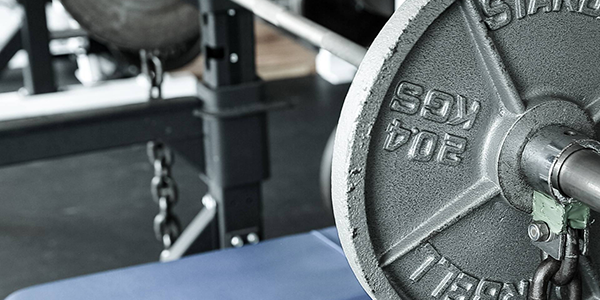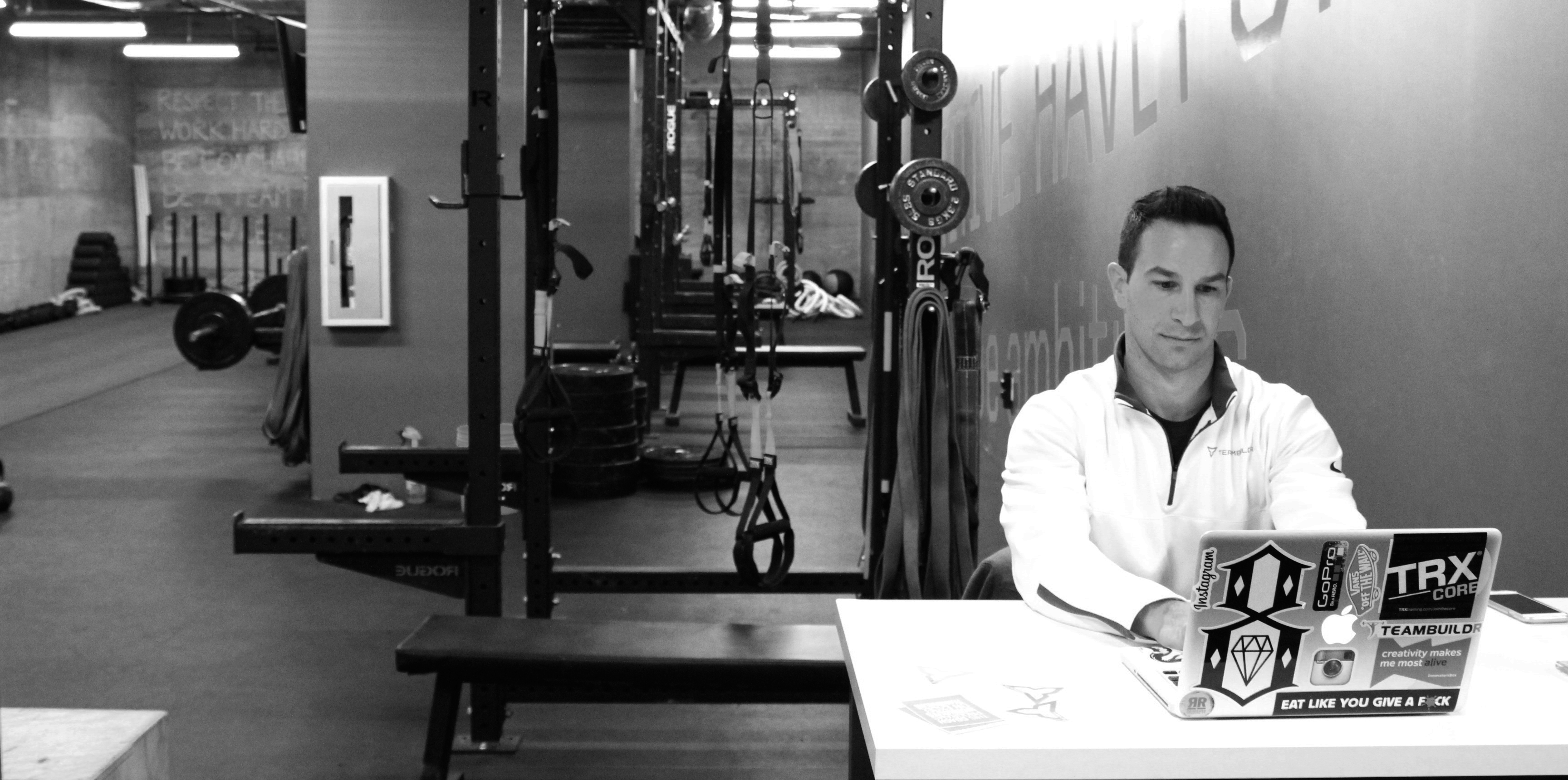Designing and Implementing an Effective Sprint Session: Part 1
There are a few key points I like to keep in mind when programming the first half of a sprint session. Although this includes our dynamic warm-up, it is not limited to it. For the sake of this article, I’d like to discuss the many things you’d see at one of our sprint sessions before sprinting. I’ll spare you the textbook definitions and explanations to say that the goal of this article is to help guide the athlete into a state of physical and mental preparedness for the impending sprint session.
I work predominantly with middle and high school-aged athletes so I’ll preface much of what I’m about to say with this: Most of my population is more immediately “ready” to sprint on a given day, physically and mentally than a more advanced, older population. Many if not most of my students can walk on the track or field, sprint, and not pull a hamstring. The same number of them set up foot races before practice before we can even wrangle them for the warm-up. When you’re in a setting with a group of kids who may not need as extensive a warm-up and who typically want to sprint, the goal becomes much less about how to excite them mentally and physically and more about how to not dull that excitement. However, there are still some important points we want to address before sprinting.
The Warm-Up
The “warm-up” is performed before sprinting for reasons much different from why technical drills and plyometrics are, but all of them are used for the purpose of getting the most out of the sprint session.
My thought process on our sprint warm-up has changed dramatically over time. I used to think of the warm-up as a checklist of exercises to prevent a checklist of injuries. This led to the belief that if somebody was ever hurt during a sprint session it was because of something they did or failed to do in the warm-up. Although that may not always be entirely untrue, I’ve found it to be more likely that it was something we’d been doing too little or too much of in other parts of our programming.
Instead of putting pressure on myself to use a laundry list of dynamic stretches in the first fifteen minutes of a session, I look at the entire session as a pyramid step-by-step process where each period only needs to prepare the athlete for the next. Our dynamic movements only need to prepare the athletes for their hops, skips, gallops, or bounds for the day. Those movements will leave the athlete more than prepared for technical drills and technical drills will bleed into true sprinting. My old warm-up would have been all of those things thrown into a blender... and then we’d get hurt.
Today, our warm-up is five minutes of low amplitude movement skills like skipping and general movement patterns that do not change no matter the day or training quality. I prefer this to be routine because it’s frankly the most boring part of the session for our athletes. Though it’s very important, it does not merit the variation and explanation I once gave it.
Locomotive Plyometrics
Skipping is a major part of our training catalog. We perform them for height, distance, and speed as well as at lower amplitudes to practice rhythm, coordination, and raise the athlete’s body temperature. As the athlete progresses through the warm-up, skip variations intensify until they are eventually performed at maximal efforts.
We use gallop variations in much the same way, generally with our second speed session of the week. These movements are performed at extremely low volumes and will eventually include bounding variations, which I’ve discussed in a previous blog post.
Skip Progressions and Volume Recommendations:
Day One, Week 1:
Low Amplitude Skips Between Dynamic Mobility Movements
Low Amplitude Skips for Height
Day One, Week 2:
Low Amplitude Skips Between Dynamic Mobility Movements
Medium Amplitude Skips for Height
Day One, Week 3:
Low Amplitude Skips Between Dynamic Mobility Movements
Medium Amplitude Skips for Height
Maximal Effort Power Skip for Height 2x15 Yards
Day One, Week 4:
Low Amplitude Skips Between Dynamic Mobility Movements
Medium Amplitude Skips for Height
Maximal Effort Power Skip for Height 4x15 Yards
Day One, Week 5:
Low Amplitude Skips Between Dynamic Mobility Movements
Medium Amplitude Skips for Height
Maximal Effort Power Skip for Height 6x15 Yards
Day One, Week 6:
Low Amplitude Skips Between Dynamic Mobility Movements
Medium Amplitude Skips for Height
Maximal Effort Power Skip for Height 2x15 Yards
Medium Amplitude Skips for Distance 2x15 Yards
Day One, Week 7:
Low Amplitude Skips Between Dynamic Mobility Movements
Medium Amplitude Skips for Height
Maximal Effort Power Skip for Height 2x15 Yards
Medium Amplitude Skips for Distance 2x20 Yards
Maximal Effort Power Skips for Distance 2x20 Yards
Day One, Week 8:
Low Amplitude Skips Between Dynamic Mobility Movements
Medium Amplitude Skips for Height
Maximal Effort Power Skip for Height 2x15 Yards
Medium Amplitude Skips for Distance 2x20 Yards
Maximal Effort Power Skips for Distance 4x20 Yards
As an example, here is what the start of our week 8 session might look like. Keep in mind, all of these are performed for 15 yards.
- Simple Skips Forward
- Simple Skips Backward
- Walking Scoops
- Walking Reach
- Simple Skips Forward w. Arms Crossed
- Simple Skips Backward w. Arms Crossed
- Knee Hug
- Ankle Grab
- Simple Skips Forward w. Arm Circles
- Simple Skips Backward w. Arm Circles
- Quad Pull + Forward Reach
- Walking RDL
- Lateral Skips
- Walking Lunge Forward
- Walking Lunge Backward
- Low-Level Skips for Height x2
- Medium Level Skips for Height x2
- Power Skips for Height x2
- Medium Level Skips for Distance x2
- Power Skips for Distance x4
This is simply a progression of how one might develop the motor ability and tissue tolerance to perform these drills at a high level. Candidly, most of my population does not need a very extensive warm-up, but the manner in which we prepare for the maximal effort skips serves as more than enough to be able to perform them safely.
When we have progressed to the point that the skips are being performed adequately, the intent of the movements can be married to the intent of the overall session. For instance, I prefer power skips for distance before an acceleration-oriented session while I prefer power skips for height on an absolute speed day. There may still be skips for height on accel day in lower volumes and skips for distance before an absolute speed session, but the volumes will reflect the preference. The main reason I delay the introduction of power skips for distance by a few weeks is due to the mentioned motor skills. Power skips for distance have occasionally been the cause of quad pulls when we introduced them too quickly. Since I started introducing them a little bit later, we have had no issues.
I’ll spare you the repeat presentation of how we progress into high-level galloping because it’s almost exactly the same as the power skip progression. I allow the motor learning to dictate our progressions on nearly all exercises so just because something is on paper does not mean it is exactly how it will progress. For instance, galloping typically takes a little bit longer for the athletes to grasp because they’re a little less familiar with it than they are skipping (typically). Even the most remedial version of these movements will benefit the athletes because of the low-amplitude varied ground contacts and coordination it takes to complete them. This is a good time to remind coaches to take their time with these progressions.
Technical Drills
Sprint drills have, understandably and reasonably, faced much scrutiny from both track and performance coaches. My philosophy on sprint drills is simple, we use them to provide context later on. I do not believe the drills in themselves are going to provide a stimulus for the athletes to adapt to that will make them faster. Instead, I consider this a teaching/learning-heavy period of practice that athletes must be fresh and alert for. These drills will progress from slow to fast, simple to “complex” and elevate in intensities so that once the drill series has been completed, the athletes will be ready for their sprint workout for the day.
An example of this might be dribbles, where I’ve had luck following a once-counterintuitive progression of using single-leg dribbles and progressing into the double leg version. The reason for this, I believe, is in order to rewire an athlete’s movement patterns we should get them as far away from that pattern as feasible before progressing him/her back toward an improved version of it. What these single-leg dribbles look like is a “Working leg” moving in a pattern that looks like it's riding a bicycle while the other looks as though it’s dragging along the ground.
The purpose of this progression is to acquire a skill. So, as much as I’d love to provide a baseline amount of days or weeks each drill should be spent, I think it would be inappropriate as it’s all dependent on how the athlete(s) perform them. Our dribble introduction follows this progression:
- Walking Single Leg Dribble
- Jogging Single Leg Dribble
- Full Speed Single Leg Dribble (High Step Frequency, Low Horizontal Velocity)
- Jogging Dribble
- Full Speed Dribble (High Step Frequency, Low Horizontal Velocity)
- Slow to Fast, Low to High Dribble (Step over ankle to knee, slow to fast)
- Slow to Fast, Low to High, High to Low (Stay Fast) Dribble
This final progression is my favorite in that I think it not only helps the athlete feel positions and movements that we want to see replicated at higher horizontal velocities, it’s also a pretty safe way to introduce significant step frequencies without the large ranges of motion.
Once these drills have been concluded, I’ll instruct our students to run 2-3 build up sprints to be sure they’re prepared not only for the frequencies of high speed sprinting but also the ranges of motion.
Our actual “sprint” portion of the session will be extremely low volume with the reps and distances to be dependent on the training intention. For linear sprinting, our sessions are going to fall into one of three categories: acceleration, max velocity or speed endurance. Mind you I’m a track coach, the bulk of our field sports train differently for energy system development than our track athletes do.
Again, these progressions are what I’ve found to be successful with my population. They evolve, adapt, and grow over time as should any good training program. With that in mind, as long as the principles are followed, find what works best for your situation.
Subscribe to our blog
Subscribe to receive the latest blog posts to your inbox every week.
Related posts

Scott Cochran's Record-Breaking Contract is Good For All Strength Coaches

Why Your Small School Strength Coach Should Be the Highest Paid Coach on Your Staff


